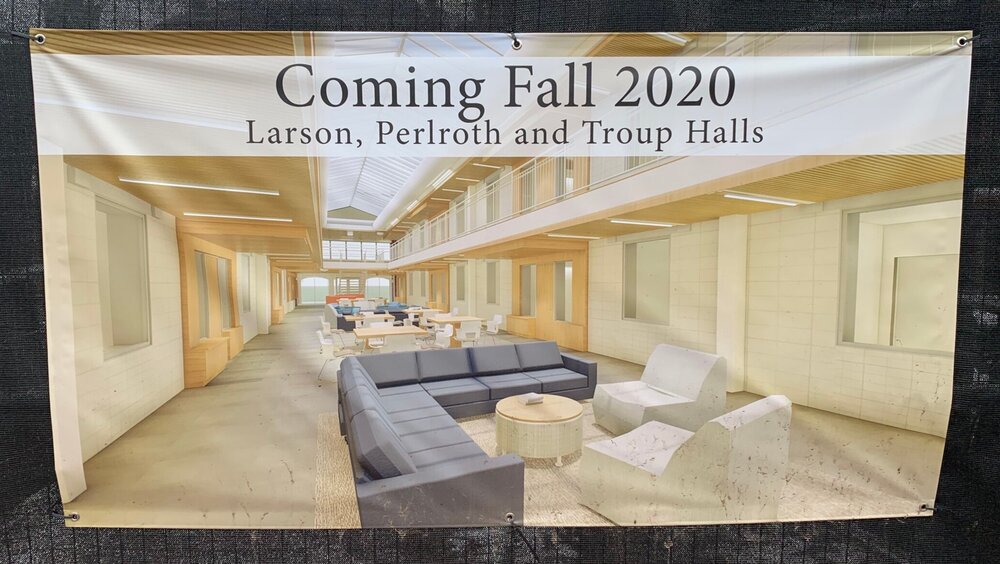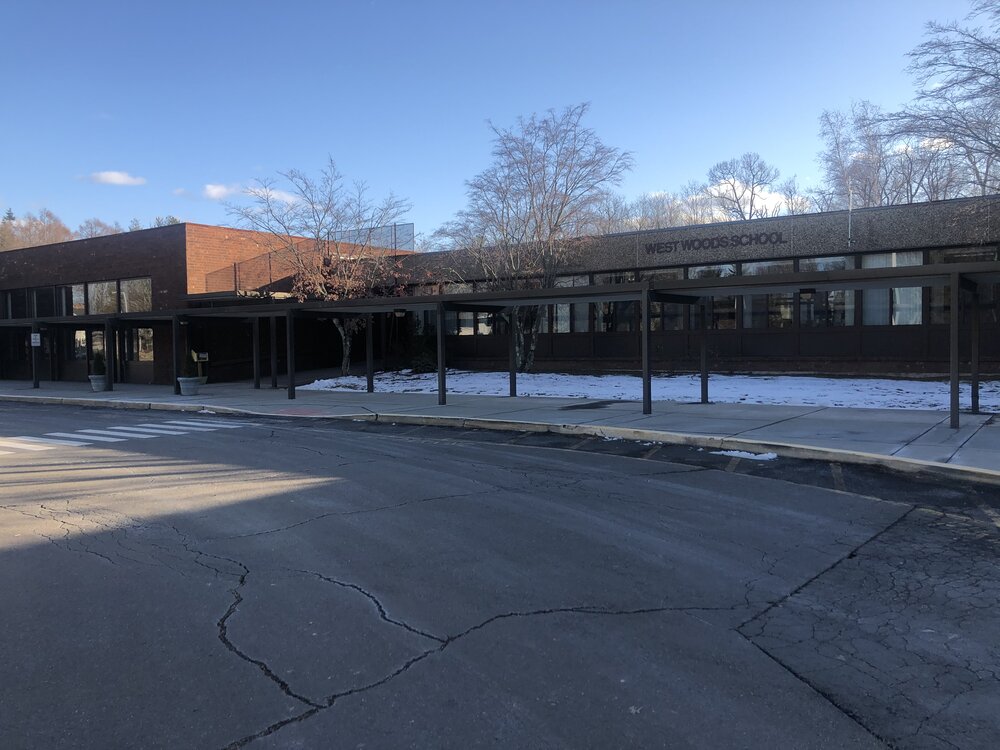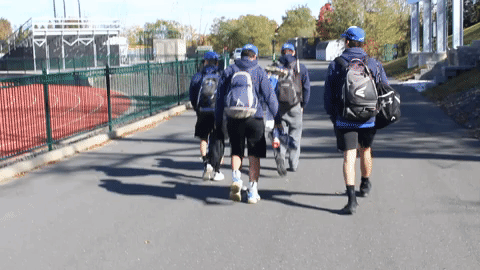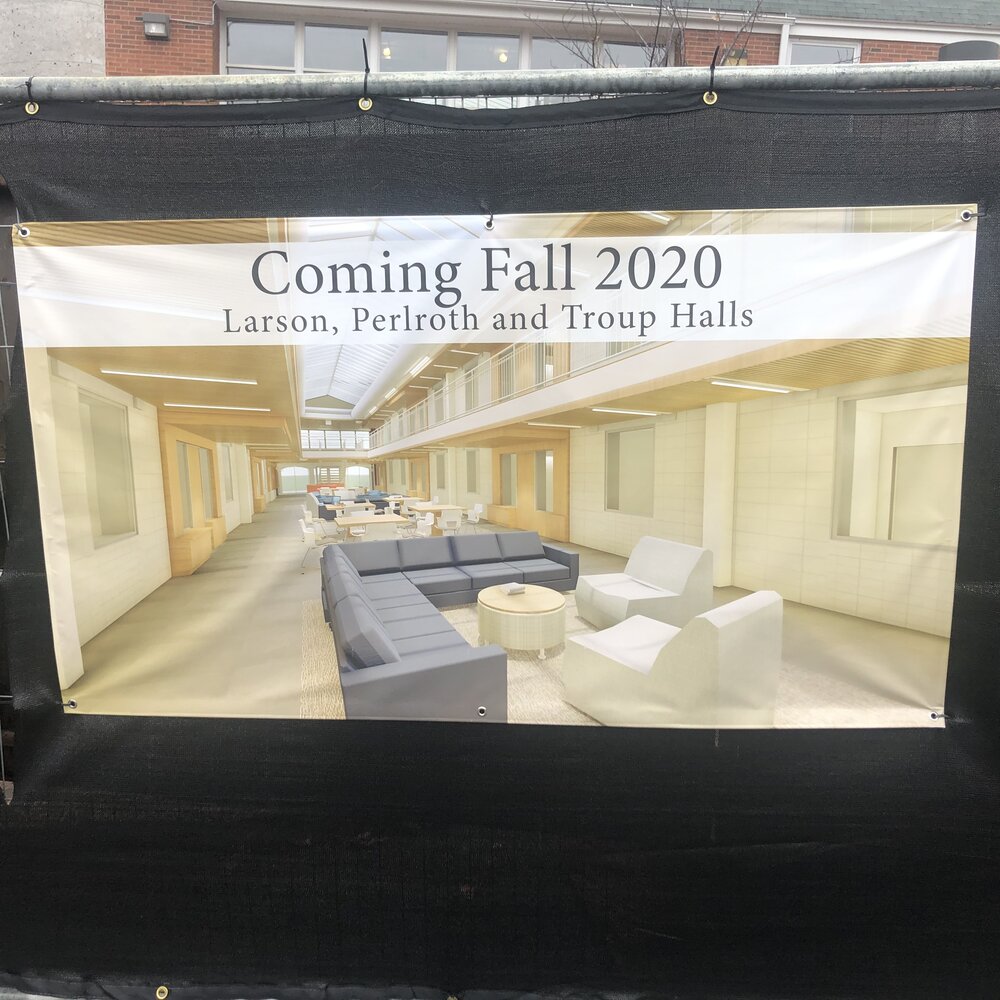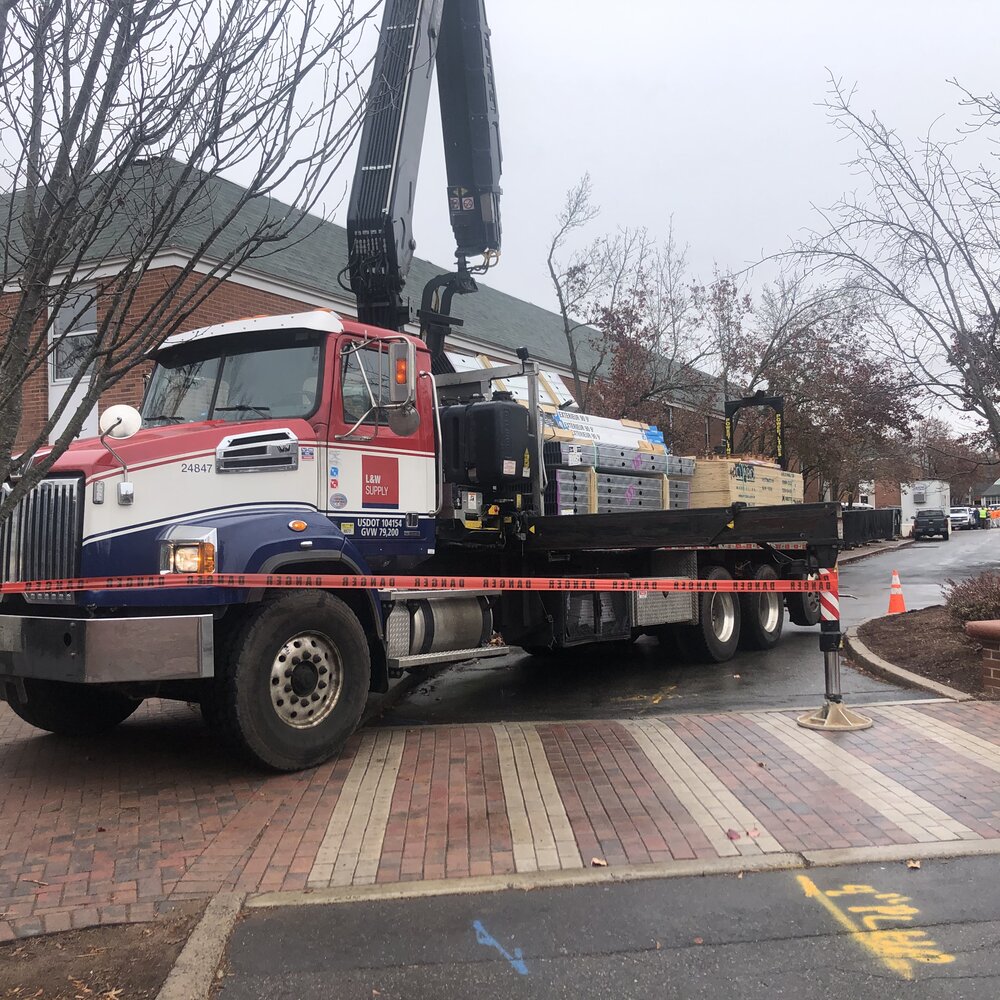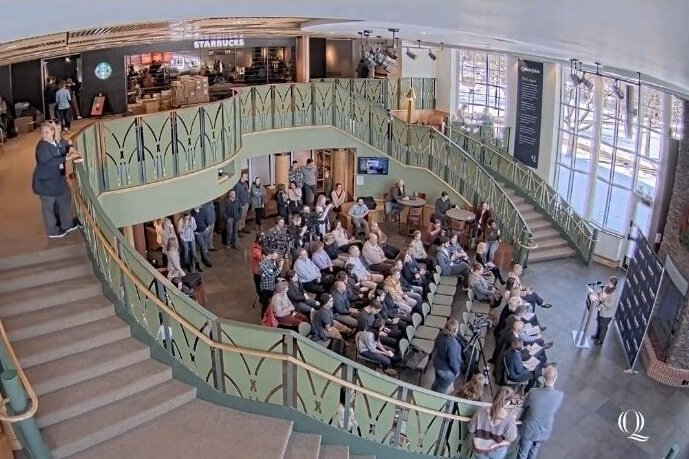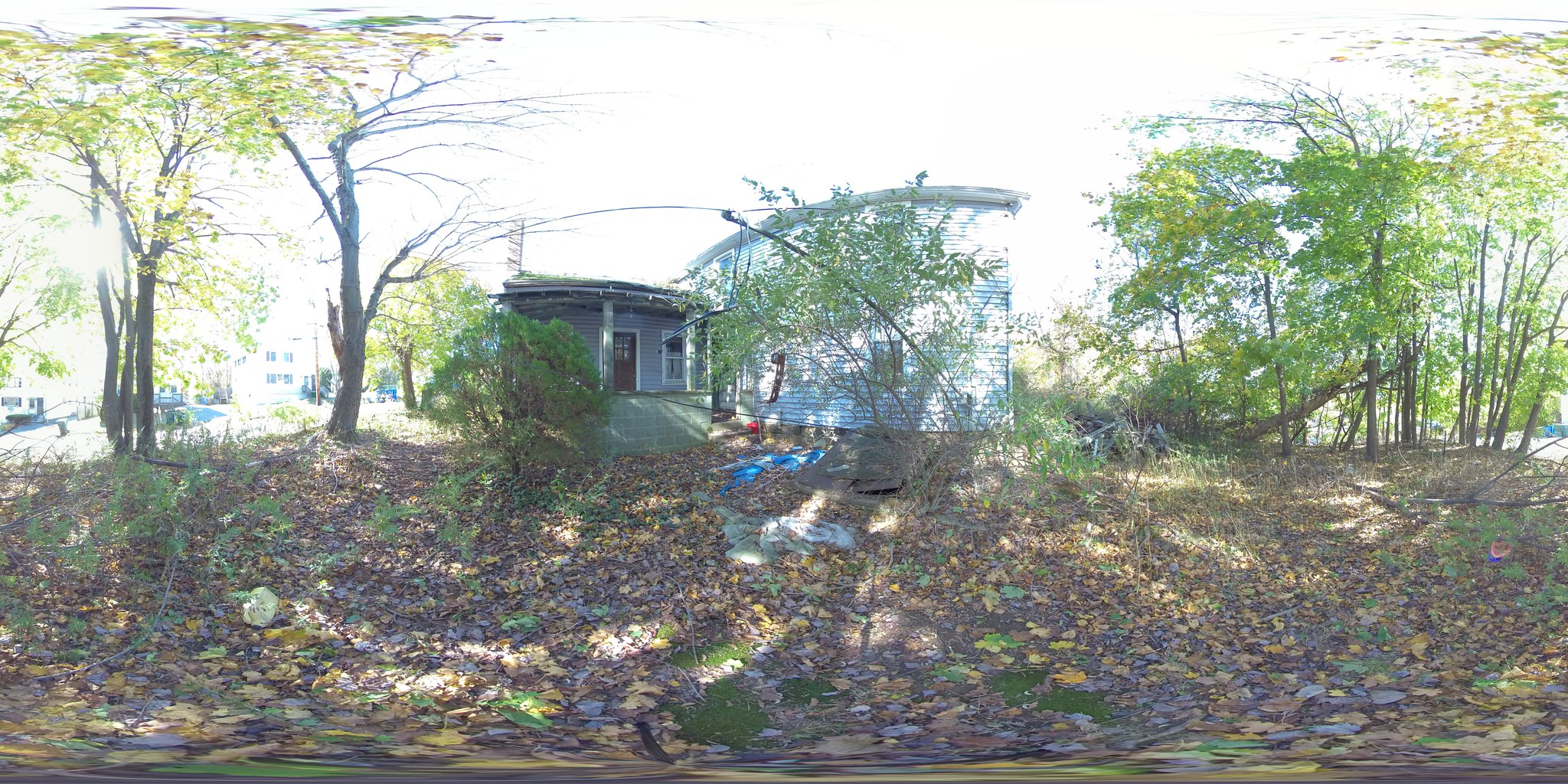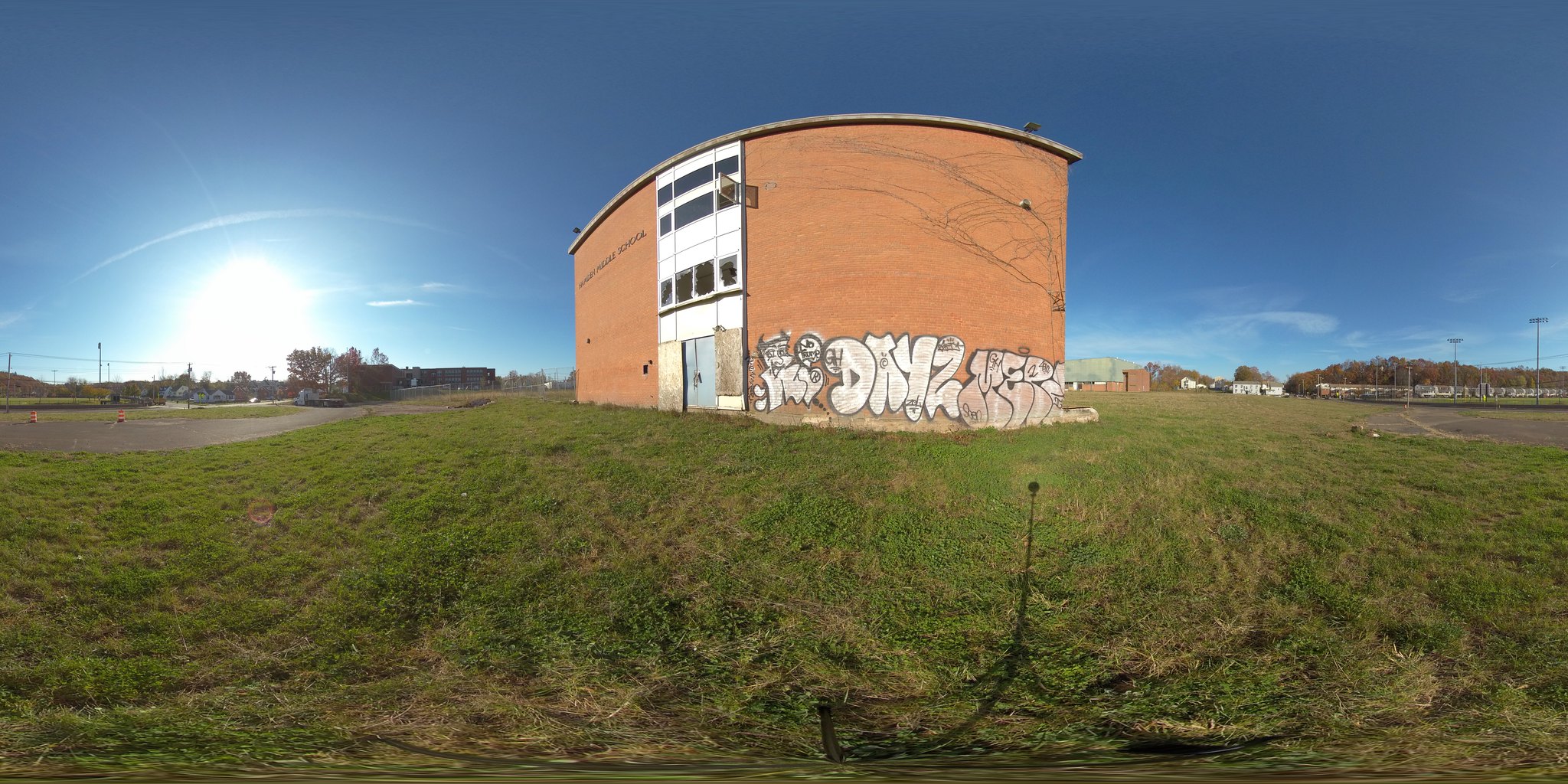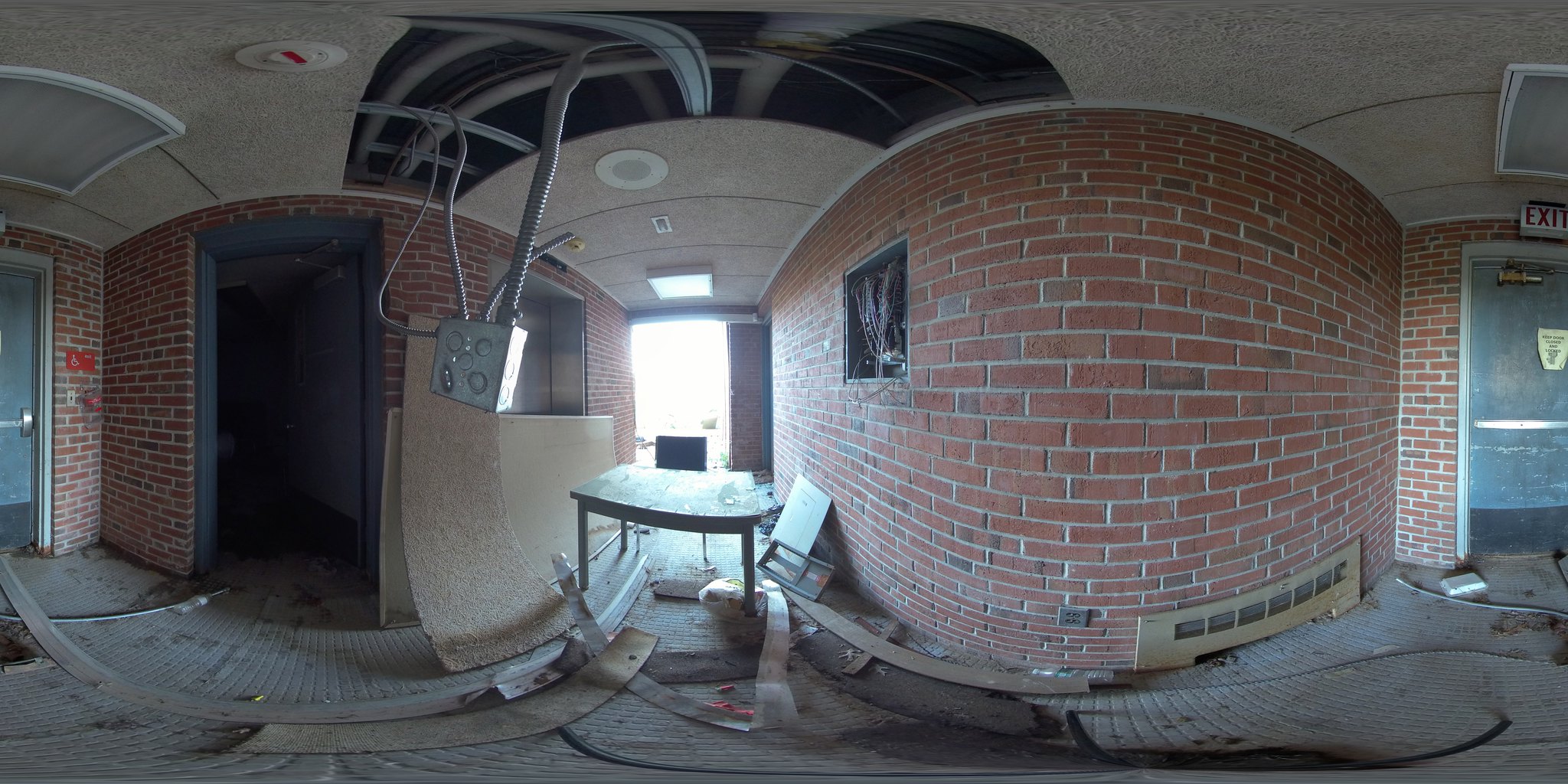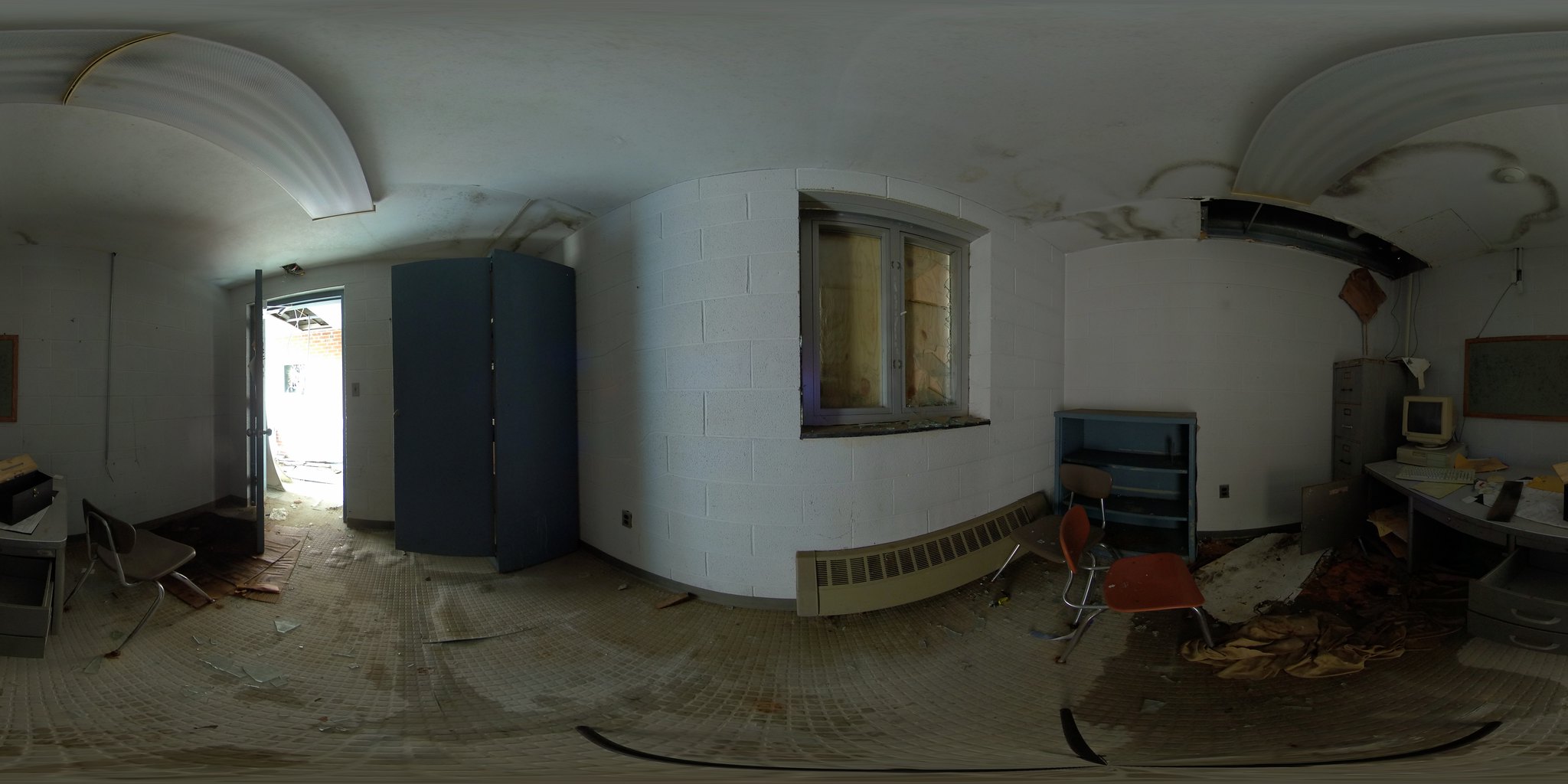
Imagine being on a stage, in front of a live audience. No script. No lines. No costumes. Just you and another scene partner sharing a common goal of making the audience before you laugh or feel engaged. For some, this is nightmare fuel, but for someone who has practiced the art of improvisational acting this is a place of comfort.
According to Britannica improvisation is, “The playing of dramatic scenes without written dialogue and with minimal or no predetermined dramatic activity. The method has been used for different purposes in theatrical history.”

James Freeman and Frank Scott of Quinnipiac’s Improv troupe communicate during a scene.
This definition uses words like “drama” and “theatrical”, but this style of acting is becoming a key tool in how college students get an edge above other college students when applying to jobs and entering the professional world.
Take Josh Gudelski for example, a law student at Quinnipiac University who stepped outside of his comfort zone and took an improv class, because he recognized how diverse this skill can be.
“No matter what your ambitions are in life, you have to be quick on your feet, and that is what improv taught me.” He said, “It also helped me communicate well with others under pressure, which also helps in my profession.”
This is an underrated style of acting that if practiced can improve a student’s communication skills, improve their performance under high pressure situations, and display the confidence needed to separate oneself to employers.
Neil Mullarkey, a co-founder of the Comedy Store Players told Financial Magazine, “Improv can be about finding ways to convey your story to nonfinance colleagues in a way that makes sense to them, and to convince people that this is the best way to go. More broadly it’s about how we work with others, how we notice other people’s feelings and stay truly in the moment.”
The United Kingdom National Theatre organization says, this style of acting dates all the way back to the mid 1500s when groups would travel town to town to preform and entertain. Many improv theater games were introduced in the 1920s and 30s to warm actors up for a performance. The actors only use word suggestion or story inspiration from the audience or fellow actors. In today’s world people are now beginning to realize that this style of acting, and the techniques behind it strongly relate to everyday life in the professional world. Main strategies like listening, body language, effective communication, team building, preforming under stress, and creativity. Each one of those strategies that improv brings together to make a scene can be brought together for a college student to perform in a job interview, and when that students gets that job become a strong employee.
Kevin Daly, an assistant professor of theater at Quinnipiac University, agrees that listening is one of the most important skills in improv and in the real world.
“Whatever it is you’re doing you’re still going to need to have really sharp listening skills to be successful,” he says.

Sarah Fisher expresses ideas to Kevin Cathy, both members of Quinnipiac’s Improv troupe.
Daly teaches two improvisational acting classes at Quinnipiac and develops the students who are brave enough to try his class, like Gudelski. He also fully believes that practicing improvisational acting can help students in whatever profession they choose,
“You develop the skills to sort of take a breath out there and say OK I don’t have to force this, I can develop through agreement that will have a payoff at the end,” he says.
He also preaches that practicing improv can elevate you as a stand out employee, “Anyone in any sort of business situation says we need an idea. Right there they’re not saying I want the most obvious idea, or the most specific, or the most close to home idea. They want you to expand and improve,” he says.

A map of the amount of Improv theaters across the United States.
Another career advising expert who stresses the importance of improv skills as a college student is Lila Carney, Director of Career Development within the School of Communications at Quinnipiac University. She is also someone who connects improv with the real world,
“There are a lot of similarities to interviewing and improvisational acting. And I also think when you get into the workplace you’re dealing with a lot of different conflicting situations, and having the ability to make decisions that have a positive impact on you, your job, and your company that you work for are all great skills to have,” she says.
One of Carney’s concerns though is that students aren’t consciously connecting improv acting and job interviews.
“They don’t connect the two necessarily consciously maybe subconsciously. I think every job interview you do is improv related and every networking opportunity that you experience has improv built in. But I don’t think students consciously make that connection, but they are doing it everywhere they go,” she says.
Another communications expert who put these skills into action in his profession is Kenneth Venit. Venit worked in television for decades, and coached many news broadcasters who worked for the Fox News Channel and more. Part of his longevity and success, and what he taught certain broadcasters was improv.
“In broadcasting just everything was live in the studio. Then it became live in the field. So we had to adjust the skill set because we didn’t have the filtering system of writing a lot of stories that we were going to be read first. You were thinking on your feet. With all of the laws you had to make sure you were saying the right things,” he says.

Fisher, Cathy, and Kirsten Koeding all listen to their scene partner and wait to respond.
In a profession like broadcast news, breaking news can happen at any moment which is why Venit stresses the importance of thinking on your feet, which is a big skill in improvisational acting. Venit admires the beauty of improv and how it is a healthy challenge for anyone willing to try it.
“When its improv somebody else has led you to that point. It’s not that you did something voluntarily. You are somewhere you didn’t necessarily think you’d be or plan to be.” He continued saying, “If you think of how a meeting in a business works or even an interview, somebody else is doing so impulsively and I think there is references to it.”
Three experts echoing the importance that trying improvisational acting, and practicing this unique hobby has plenty of benefits. As college students the goal after graduation is to obtain a job in the field you love. Now more than ever students need to recognize the importance of this hidden gem that is improvisational acting. One can become one step closer, and have a step above others who want to obtain the same job in the field of that students choice.
The other unique thing about improvisational acting and how it relates to the work world is its diversity. The strategies of improv can also relate to professions that do not relate to communications or theater. Gina Pallanta and Bridget Kavanagh are two women who have experience in improv at Quinnipiac, Hartford, and New York City and who currently work in health science fields: Pallanta as an emergency room nurse and Kavanagh as an occupational therapist. Both recognize that within their job force body language, quick thinking, and team chemistry is vital.
For Pallanta, lives can be in danger if she doesn’t make certain decisions quickly enough, and is grateful to have the improv experience that she does.
“Working with other health care professionals it’s good to have that mentality because especially an emergency you don’t know what’s coming,” Pallanta said, “And you don’t know what you’re walking into and you want to have that fluid aspect to be able to be flexible.”
Kavanagh tries to add in a humorous and conversational aspects to her work, while thinking on her feet. Both skills she learned as an improvisational actor. Using that quick humor, she makes sure her clients feel comfortable.
“You’ve got to deal with caseloads you’ve got to deal with people’s disabilities. They’re in a place like a nursing home that they don’t really want to be,” Kavanagh said, “So having that humor and having that ability to build rapport and have a conversation with these people helps motivate them.”
Communication and health science are not the only professions improvisational acting helps with either. Justin Furtado, a man who also gained his improv skills at Quinnipiac, is gaining a masters in finance, and when working with his co-workers is when his improv skills come out to play.

Scott responds quickly to one of his scene partners ideas.
“A lot of times the better improviser in the scene is usually the one that is less funny because they’re able to give everything to their partner and make their partner seem like an absolute star. And that is probably the most important part of looking into the team is you don’t try and make it all about yourself. You act as a supplement to the team,” he said.
Listening, body language, effective communication, team building, performing under stress, and creativity: All skills that experts echo help you with job interviews and becoming a strong employee. Now all it takes is for students to be brave enough to practice the art. If students want the edge they must take a leap of faith, step outside their comfort zone, and grow.




